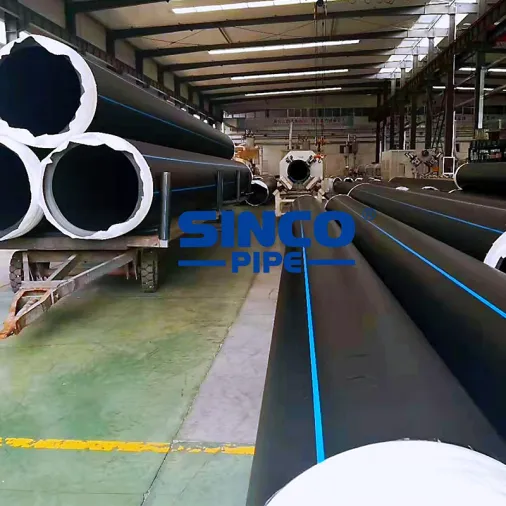6 Hidden Risks of HDPE Pipes – #5 Will Keep You Up at Night!
High-Density Polyethylene (HDPE) pipes are celebrated for their durability, flexibility, and resistance to corrosion, making them a go-to solution for water supply, gas distribution, and industrial applications. However, like any material, HDPE pipes are not without their flaws. While their benefits are widely advertised, there are hidden risks that often fly under the radar—until it’s too late.
In this article, we’ll uncover six lesser-known dangers of HDPE pipes, with a spotlight on risk #5—a silent threat that could jeopardize entire systems and haunt your peace of mind. Whether you’re an engineer, contractor, or homeowner, understanding these risks is critical to avoiding costly failures and ensuring long-term safety.
1. Chemical Degradation Over Time
While HDPE is resistant to many chemicals, prolonged exposure to certain substances can cause slow, invisible degradation. Oils, solvents, or industrial acids may weaken the pipe’s molecular structure, leading to micro-cracks or brittleness. This risk is especially high in industrial settings where pipes transport non-water fluids.
Why it’s hidden: Damage occurs gradually, often without visible signs until a leak or rupture happens.
How to mitigate:
Always verify chemical compatibility using manufacturer guidelines.
Conduct annual inspections for discoloration or surface texture changes.
2. UV Radiation Damage in Above-Ground Installations
HDPE pipes installed outdoors are vulnerable to UV radiation, which breaks down the polymer chains. Even pipes labeled “UV-stabilized” can degrade over time, becoming brittle and prone to cracks.
Why it’s hidden: UV damage is overlooked in regions with moderate sunlight, but cumulative exposure over years can still cause failure.
How to mitigate:
Use black HDPE pipes (carbon black additives improve UV resistance).
Shield pipes with protective coatings or enclosures.
3. Thermal Expansion in Extreme Temperatures
HDPE expands and contracts with temperature fluctuations. In extreme heat or cold, this can stress joints and fittings, causing misalignment or leaks—especially in poorly anchored systems.
Why it’s hidden: Thermal stress is often blamed on “installation errors,” but the root cause is rarely investigated.
How to mitigate:
Allow for expansion loops or offsets in pipeline design.
Use flexible couplings to absorb movement.

4. Microbial Growth in Stagnant Water Systems
HDPE’s smooth interior discourages scaling, but in stagnant water systems (e.g., fire sprinklers or low-flow irrigation), biofilm and bacteria can thrive. Over time, this can corrode the pipe or contaminate water supplies.
Why it’s hidden: Microbial issues are mistaken for “water quality problems” rather than pipe-related risks.
How to mitigate:
Flush systems regularly to prevent stagnation.
Install antimicrobial additives in water (where permissible).
5. Electrofusion Joint Failures – The Silent Nightmare
#5 Risk: Electrofusion joint failures – This is the threat that will keep you up at night. Electrofusion is a popular method for joining HDPE pipes, but improper execution can lead to catastrophic, delayed failures. Tiny gaps or contaminants during fusion create weak points that may hold pressure for years—until a sudden rupture floods a building, halts production, or triggers environmental contamination.
Why it’s terrifying:
Failures often occur without warning, during peak usage or extreme weather.
Root causes (e.g., poor training, rushed installations) are hard to trace retroactively.
How to mitigate:
Train technicians rigorously on electrofusion protocols.
Use high-quality fusion equipment and verify joints with pressure testing.
Implement IoT-based leak detection systems for real-time monitoring.
6. Ground Movement in Seismic Zones
HDPE’s flexibility is a strength, but in areas prone to earthquakes or landslides, repeated ground shifts can fatigue the material over time. This risk is amplified in pipelines buried in loose or unstable soil.
Why it’s hidden: Fatigue cracks develop slowly and are invisible until a major seismic event triggers a rupture.
How to mitigate:
Reinforce pipelines in seismic zones with protective sleeves.
Conduct geotechnical surveys before installation.
The Bottom Line: Don’t Let Hidden Risks Derail Your Project
HDPE pipes are a remarkable innovation, but their hidden risks demand proactive management. While risks #1–4 can be addressed with careful planning, it’s risk #5—electrofusion joint failures—that poses the most insidious threat. A single flawed joint can compromise an entire system, leading to emergencies that strike when least expected.
To sleep soundly:
Prioritize quality control during installation, especially for joints.
Invest in monitoring technology to catch issues early.
Educate your team on the nuances of HDPE’s limitations.
By confronting these hidden risks head-on, you can harness the benefits of HDPE pipes while avoiding the disasters that lurk beneath the surface. Remember: What you don’t know can hurt you—but now, you’re equipped to stay one step ahead.

